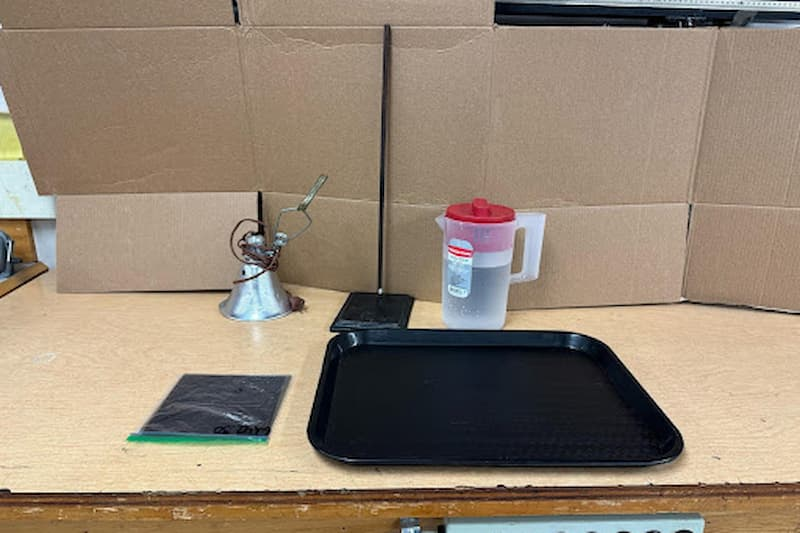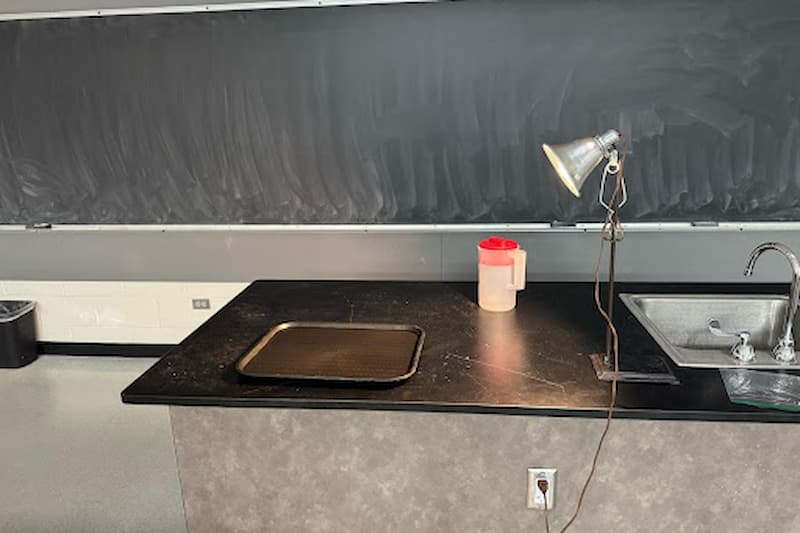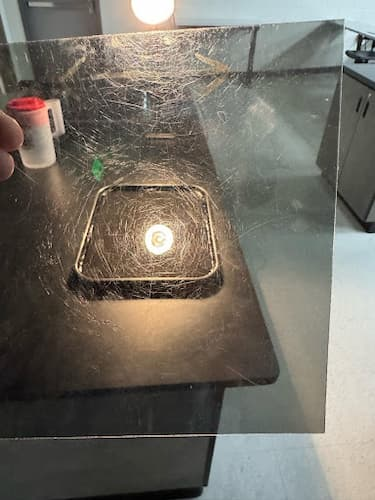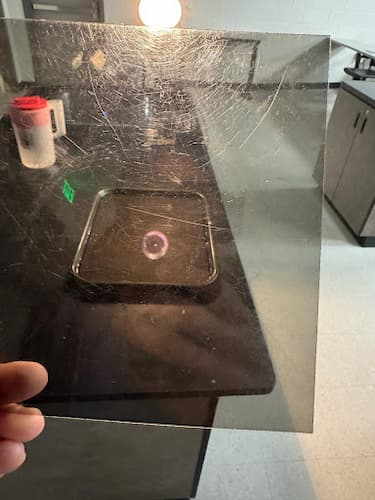Brewster's Angle with Water
PIRA: 6H20.15
Overview:
This Brewster's angle demonstration showcases the phenomenon of polarization by reflection. When unpolarized light strikes the boundary between two transparent media (such as air and water) at a specific angle, the reflected light can become completely linearly polarized. This special angle is known as Brewster's angle (θB). At this angle, the reflected and refracted rays are exactly 90 degrees apart. The key physical principle is that at θB, the component of the incident light’s electric field parallel to the plane of incidence (the plane containing the incident, reflected, and refracted rays) is entirely refracted into the second medium, leaving only the perpendicular component to be reflected. Consequently, the reflected light is 100% polarized perpendicular to the plane of incidence. The demonstration typically involves shining a beam of unpolarized light onto a water surface and using a polarizing filter (analyzer) to show that at a particular angle of incidence, the reflected light can be completely blocked by rotating the analyzer—confirming its linear polarization. This effectively illustrates how light interacting with a dielectric surface at a specific angle can separate its polarization states.
Materials:
Pitcher filled with water, black lunch tray, vertical rod on a stand, an unpolarized light source (preferably with a clear bulb instead of a frosted one), and polarized sheet of plastic.

Setup:
Fill the lunch tray with water until the water cover the entire bottom surface of the tray, place the light source on the stand and aim it at the surface of the water in the tray. Make sure that the angle between the incident light ray and the normal to the surface of the water is around 53°.

How to:
In order to see the effect of the polarization stand in front of the water so that the reflection of the light bulb can be seen. The distance that one stands away for the water should be about the same as the distance between the tray and the light source. Use a polarized sheet to block out the reflected light.
Safety
1) Do not look directly into the light source.
2) Let metal hood around the light source cool off before handling after use.


